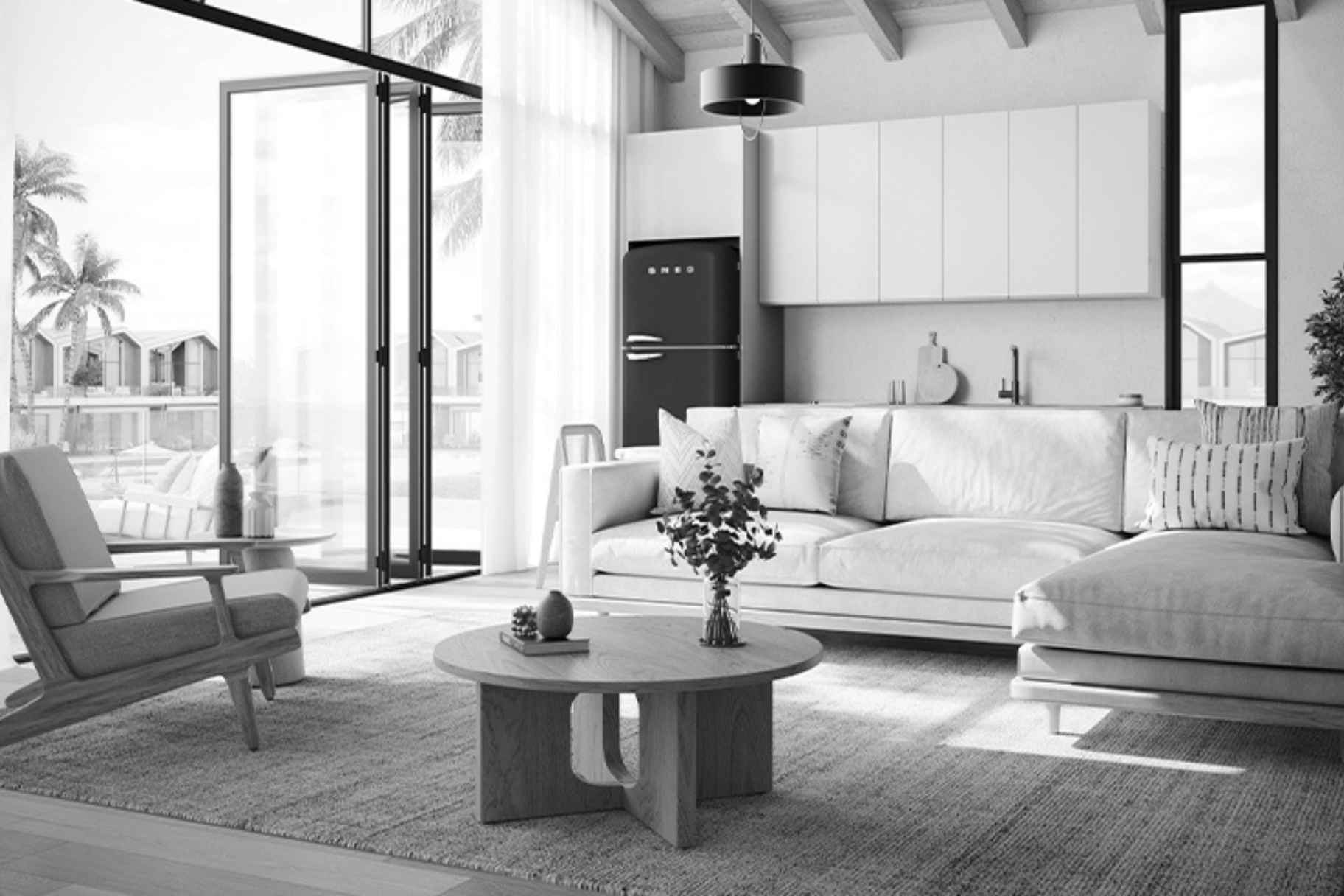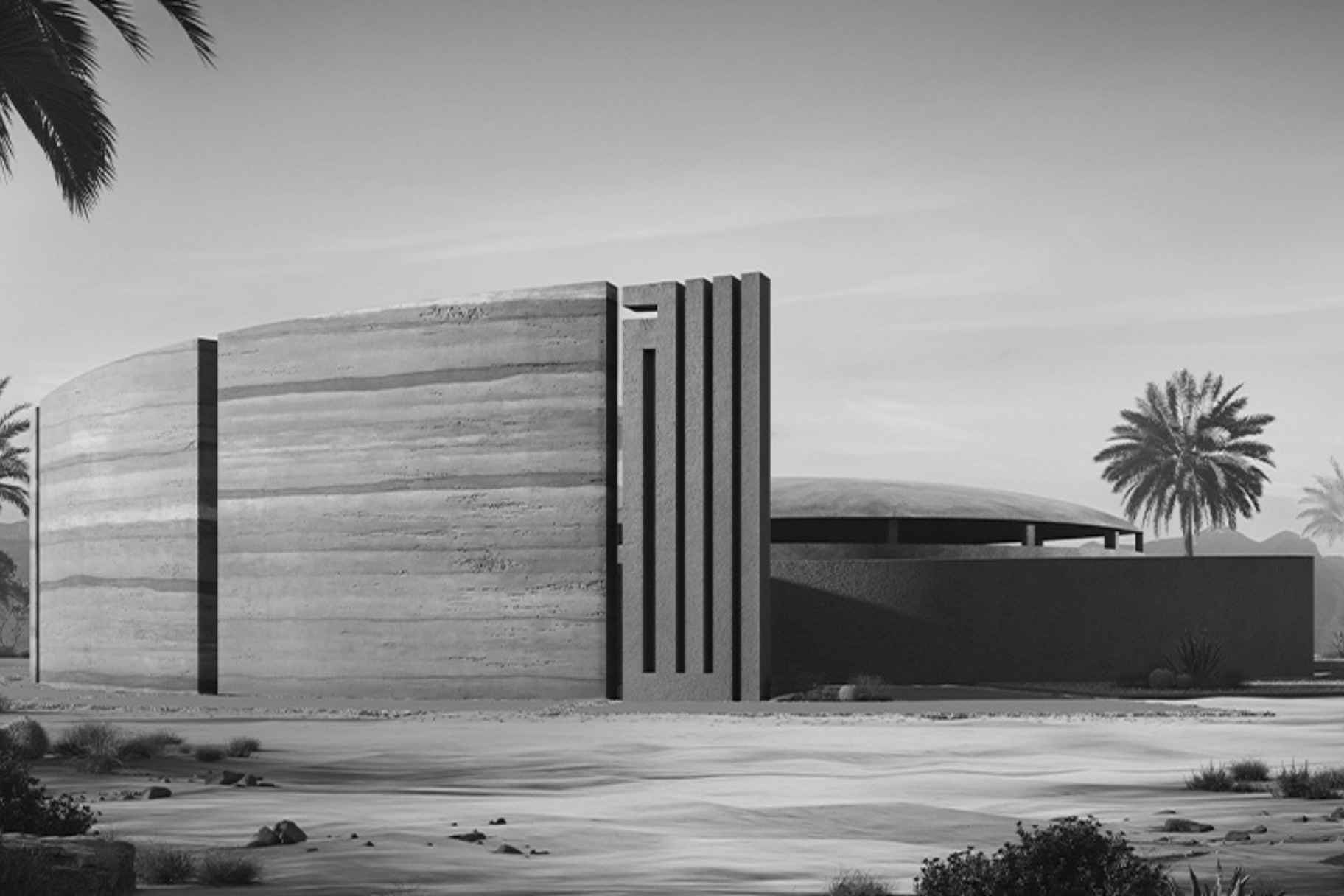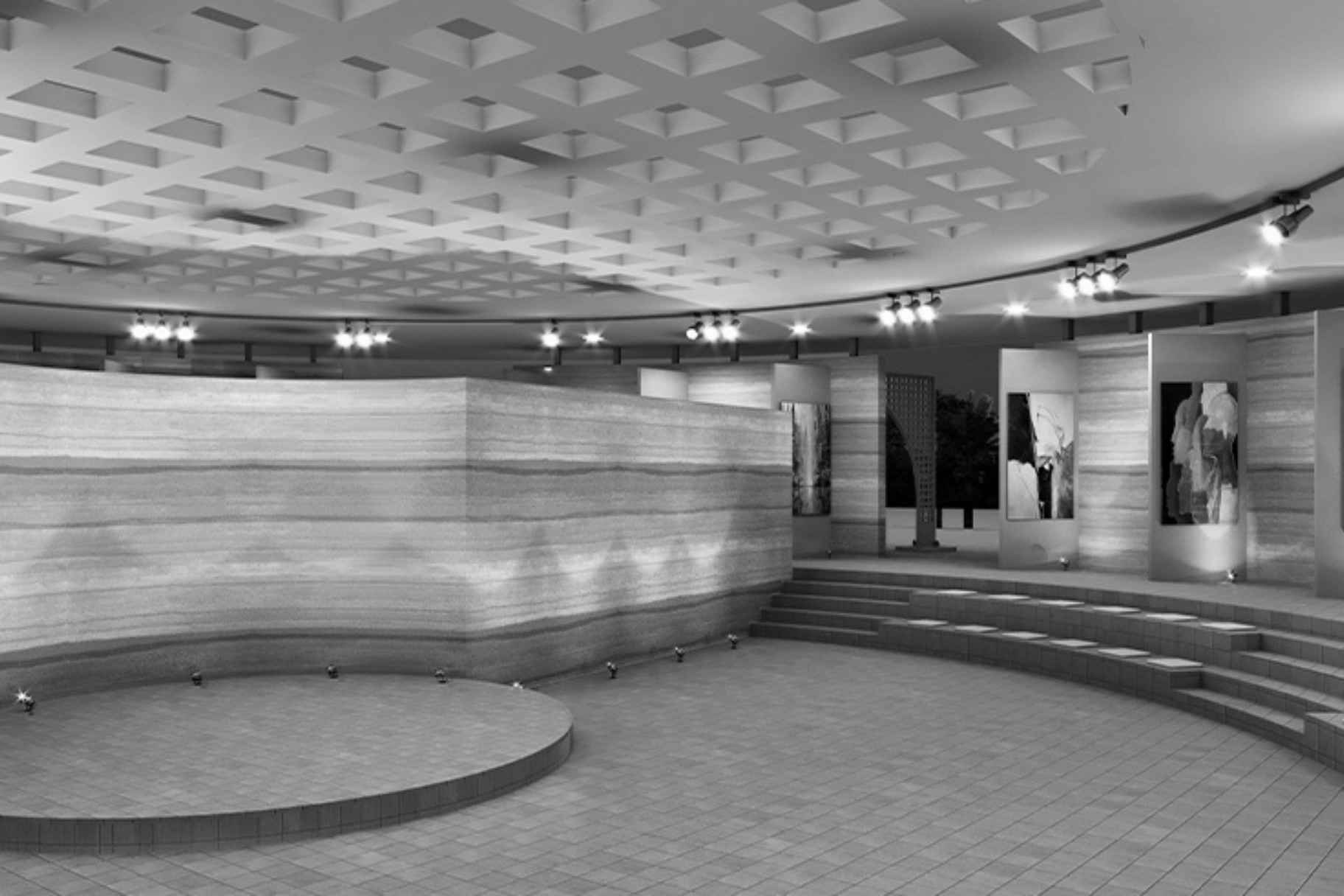Sarah El Battouty is Building a Greener Future from the Ground Up
ECOnsult founder Sarah El Battouty expounds on founding Econsult and reshaping the region’s green building movement.

In an industry often defined by aesthetics and spectacle, Sarah El Battouty has made it her mission to prove that architecture can—and must—be driven by purpose. As the founder of ECOnsult, one of the first female-led green building consultancies in the region, she has carved out a space where climate science, construction, and design converge. Her work ranges from carbon-neutral villages in the Egyptian desert to hydrogen-powered skyscrapers and net zero mosques, with each project challenging conventional notions of who sustainability is for and what it should look like.
El Battouty’s impact has been recognised internationally: her work has been featured in Dezeen and Wallpaper as some of the first Egyptian architecture projects to be spotlighted by these publications, and she was named amongst Dezeen’s list of top sustainable designers alongside figures like Sir Norman Foster, Stella McCartney, Anna Heringer, and Diébédo Francis Kéré.
El Battouty comes from a long line of architects, but chose not to enter into the family business, opting instead to build her own company from scratch. With no initial capital, no institutional support, and a market largely skeptical of eco-design, she built ECOnsult into a regional leader in sustainable architecture. Her projects reflect a grounded vision of climate resilience—local materials, traditional techniques, and modern systems working in tandem to create buildings that are efficient, inclusive, and humane.

What motivated you to break away from the family business and start ECOnsult? Was there a defining moment that made you take the leap?
I come from a fourth generation architecture family, so it was inevitable to either join, diversify the business or follow through and join the business, which was based in Saudi Arabia and Cairo. At the time of my graduation, the laws in the Kingdom didn’t allow women to integrate in architecture practices or permit them to be on construction sites. I didn’t want to have restrictions on how I learn a business, nor where to gain my experience across the value chain. So early on, I decided to be somewhere where I can learn building practice from the scope of the research, office and all the way to construction sites.
Since my childhood I have been occupied with developmental issues, particularly nature and planet conservation, but I always loved design and felt disenfranchised that there was no connection between these two worlds. When I went to the University of Cambridge to study architecture I was very excited, but soon I felt that the degree was deeply rooted on conservative and traditional teaching. Progressive schools taught design focusing on engineering and technological advancement in material. There was little on what the sector was doing to address humanitarian issues like climate change, and environmental design wasn’t a major part of the curriculum.
I would attend environmental science and architecture to find answers. It didn’t make sense to me that sustainability was detached from the built environment and that our role as architects was independent from future challenges. After two degrees, a masters, and years of work, I decided to take the risk and start a business that merged these two worlds. There wasn’t a “moment”— I always had a plan.
You started ECOnsult with no capital—how did you manage to grow the company into what it is today?
Naturally, when I set out to start, I had no capital and my family was reluctant to take risks. I was trying to speak with banks and investors, but they all advised me to forget it. Time after time, I was told that having a woman-led green company that works on buildings and sites is farfetched. The risk was too high and we wouldn’t last a few months, burning resources to stay afloat. At the time in 2012, there were no laws or legislation binding green building practices.
I sold my car for LE 45,000 and used the money to register the company, make a logo and fly in a partner to start. Nothing deterred me because I knew that the future holds a place for green building markets. The research all showed data on the impact of the building sector on the climate and our health. Cities were showing failure and renewable energy wasn’t reaching its potential fast enough. All solutions were expensive and technologies were imported. The only sector that could be localised and economically competitive was construction.
ECOnsult grew because of two main factors. I didn’t name the company after myself like a typical design company because I wanted it to be a movement and a disruptor beyond myself. ECOnsult grew because it solves global design issues and cannot be purely about design philosophy and aesthetic. The name is expert-driven, ecologically-centric and global. In many ways we knew what we were doing.

Green architecture and sustainability are often male-dominated fields. What were the biggest challenges you faced as a woman in this industry?
What didn’t we face?
Thankfully, I grew up with strong educated women. My grandmother was among the first to obtain a university degree, and there was always encouragement to all the women and girls in the family to become architects, even if the sector had always been male dominated by nature of opportunities and less women entering the engineering field. When it came to green architecture and construction, the challenges were different and, I can tell you, more complex. The most obvious is how there are fewer women in engineering and architecture. There are more women in interior design, but less in architecture.
But Green Architecture is another discipline merging engineering, climate science and technology with design. All these fields respectively are male dominated, so imagine how minute women’s representation is in the field of green building. Only 19% of women globally join STEM, and from this less than 3% become senior management at work and, almost 1% establish companies in this field. Fewer than 50 women in the world are specialists in green building.
It is because I have a natural inclination to research statistics and read about experiences that I felt prepared for this extraordinary disadvantage. Challenges started with lack of trust in women’s engineering capabilities, so before I established my own companies, I was assigned boring and repetitive design tasks in comparison to my male counterparts. I was paid less and, if I wanted to do more work, I would wind up doing unpaid overtime. I was single and ready to work toward making myself essential to the team. Within three years of graduating, I was already a senior architect and project manager. I think it was expected that women had less tolerance.
When I started the company, banks and investors who had no idea about sustainable architecture, let alone green building, would automatically say we were high risk because working on remote construction sites would be difficult and dangerous, and our only projects would be very small house extensions.
Some of these banks are our clients today.
You’ve spoken about inspiring young climate action leaders. How do you see your work as influencing the next generation?
That’s quite a big statement. Inspiration is all about attainable connections. I get inspired by highly skilled people with incredible power being humble, being focused and consistent about solving problems or making solutions affordable and accessible.
I set out to make green buildings that provide climate protection against heat and discomfort for normal and disconnected people in low income communities. My passion is an underlying voice in everything we deliver, and it is heartfelt. I don’t know how this resonates as a statistic. I’m not concerned with that. What I know is that people are influenced positively when they believe you.
Along the journey, we have trained hundreds of students, helped raise hundreds of millions of pounds for startups, and advised governments and leaders in Africa, the GCC, Europe and the US on climate resilience and the building sector. But what sticks with me most is that we remain approachable to school and university students. They can call me, send me a message or ask for advice.
Our work encourages many students to explore the integration of climate action in their business as an operational feature. They say if you can do that with architecture, you can also do it in product design, fashion, farming, et cetera.
Climate-action leadership has been perceived as activism. What people say to me is they are inspired by how businesses can be climate-action-oriented and that they see the seamless integration of environmental ethics in the business as our key to success which they want to copy. The best feedback I get is when young people tell us they have followed us for years, and look to us for consistency and motivation. I don’t know if I as a person am influencing others, especially that I am a highly private person and talk about my life with difficulty. For work, it's different. I speak about our work and what we want to do with a great deal of energy.
I don’t want negativity to detract from young people’s drive, nor do I want them to look up to role models and lack the confidence to speak with them. What is the point of being a leader if you don’t share knowledge and communicate beyond your company?

How can young architects, designers, and business owners contribute to a more sustainable future, even if they’re just starting out?
They have to think independently. They should also be proud of what they are making, while questioning if the direction the design field is taking is contributing positively to development. We are in a fast-paced world led by attention and quick, yet sometimes shallow, wins. I think we also fall into the trap of the limelight, seeing marketing and fame and believing them to be viable ways of measuring impact. They aren’t. The most elaborate, expensive, and avant-garde design may make noise for a short period of time, but does it challenge the shortcomings of the industry? Is it relevant to the users? And is it aligned to your own values? These are thoughts that seldom get answered in the grind of work. It depletes the joy of art and meaning.
For young leaders and thought makers, having to find their own pace and consistency is a huge skill. Our ability to learn on the job too is essential for growth. Designers have to know that they are continuously maturing and evolving into their own brand and style. I would advise knowing that creative work is not the same as other industries and to pursue their design with an open mind that evokes looking deeper into the challenges, sustainability being at the forefront.
Egypt is still developing its green architecture sector. What were the biggest obstacles to pioneering sustainable building in the country?
It’s improving from the policy framework and the private sector promising on the delivery of better design and efficiency in building operations. I am working on the world’s most sustainable hydrogen powered corporate tower: the Forbes International Tower. We just completed the region’s first Net Zero rural project, delivering an EDGE advanced net zero school for vocational education.
We know the spectrum and understand the stakeholders, so I can answer confidently. The key obstacle is access to financing and localization of technology. Almost everything that goes into making a green building from technologies is imported. We need to have more local technology for energy, water treatment, data collection, and thermal solutions— all produced in factories in Egypt.
We already have a head-start with high calibre building materials like steel and concrete, but there is much more we can do to make the technology available, cut time and reduce the reliance on imported goods, thus freeing up the sector from economic fluctuations.

Can you walk us through ECOnsult’s first carbon-neutral project in the MENA region? What made this project groundbreaking?
The Royal Herbs Village was a trailblazer from the onset. We created a project set out to be a sustainable solar-powered village for farm workers with an extended ecolodge and related facilities. It was groundbreaking in that we collaborated with local farmers and the community to co-design the project, understanding their traditional methods in coping with climate change and weather extremities. The project reached 10 degrees cooling without mechanical assistance and used entirely local materials, leading to a series of green certification from the world green building council, carbon neutrality as well as the ASHDEN AWARD for sustainable design and fair cooling.
It was also the first project to target low-income rural communities, giving them a shot at inhabiting a green building village that was affordable by using low-tech solutions and local labour. This set the bar that green buildings shouldn’t be exclusive to high-income strata while emphasizing social, economic and environmental equity.
The village is in the New Valley and houses 120 to 150 workers with a residential and commercial series of buildings, one mosque, one hydroponic farm, and several recreational facilities. It is 100% powered by renewables, and it saves water and material by 60% and 40% respectively.
What makes the Net Zero Mosque and Net Zero School unique? What challenges did you face in their development?
The design is simple and philosophical, using the golden spiral to form a circular building and great wall. The Net Zero Mosque of continuity is based on a spiral shaped entrance into a circular mosque consisting of a flat free span dome. The mosque represents ascendance into a spiritual experience with the minaret interpreted as an abstract vertical element. The design of the mosque was challenging due to extreme weather conditions onsite.
The main goal of designing a net zero mosque was to have the entire building powered by renewable energy as well as 90% water reuse and recycling. These two elements can be resolved using efficient water saving as well as allocation of water for irrigation after treatment.

You designed the COP27 National Pavilion, which showcased contemporary Egyptian artists. How did architecture and sustainability come together in this project?
Imagine designing the most important 1,000 sqm in the world for a duration of two weeks with all eyes on the host country? The task to develop a brief for the project was a key goal from the beginning. I didn’t want to show a side of Egypt that wasn’t predictable or dedicated to a particular era nor specific to a style, so I steered away from the ancient Egyptian era and shifted my focus to the expression of art in modern Egypt. I wanted to show Egyptian perceptions of the relationship between Egyptians and nature through the design aesthetic of artists.
That entailed building an exhibition of artworks around the themes of food security, femininity, oceans, rivers, minerals, trees, the Nile, politics, astronomy, theology, power, and conservation. I designed a space curated around artworks. The Dahabeya hall hosted a series of art based on the need to conserve the biodiversity of the Nile. Another around science and how education and religions call for conservation of the planet. The high level political leaders' meeting rooms had paintings showing how free nature is compared to human thinking with pieces about women giving water and life from the sea.
A special piece was dedicated to the fava bean sculpture, a key Egyptian nutritional food, sat on large furniture carved out of a petrified tree. The central feature called for the protection of a sacred tree with mystical creatures surrounding it and a giant wall with an ode dedicated to the Nile. The theme was tough, but it was the single largest exhibition of artworks displaced in a glass and stone box open to the viewers.
We were happy to hear that it has been considered one of the most beautiful pavilions in COP history. The link between architecture and sustainability couldn’t be expressed more profoundly by using art, which is a universal language deeply entrenched in human need.
- Previous Article Michael Bublé to Perform in Egypt’s New Capital
- Next Article You Can Now Explore Oman on Your Layover With Oman Air's New Programme



























